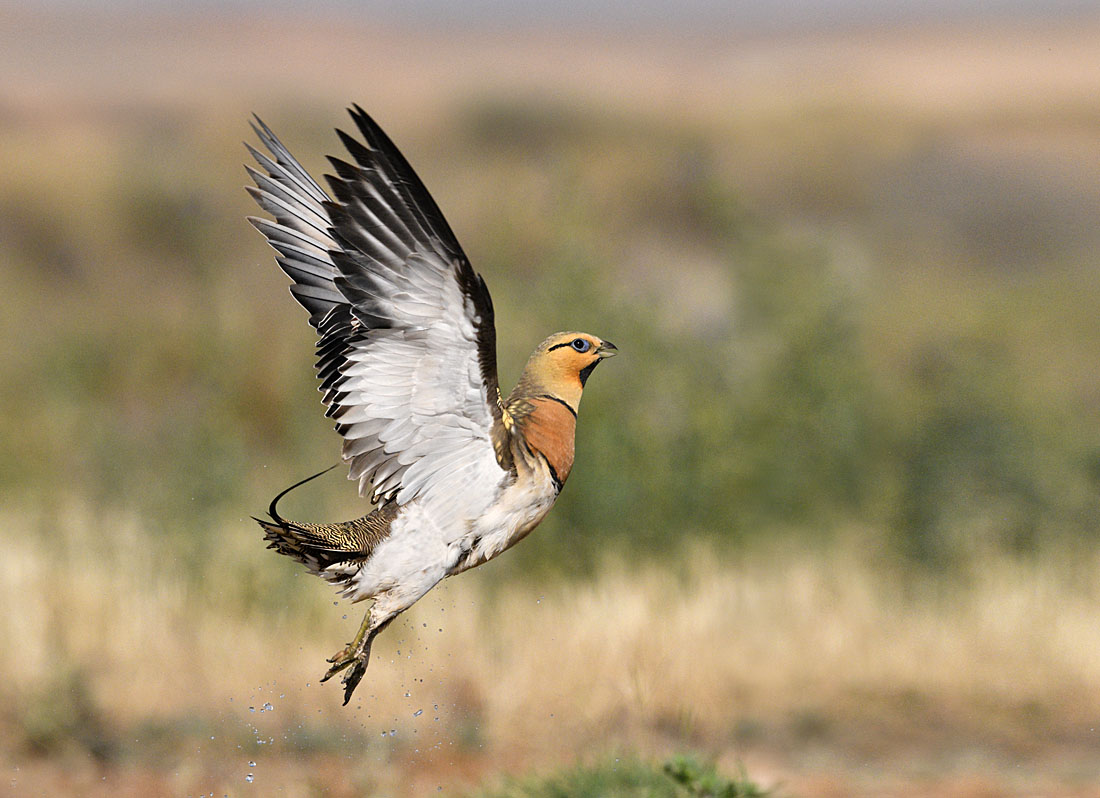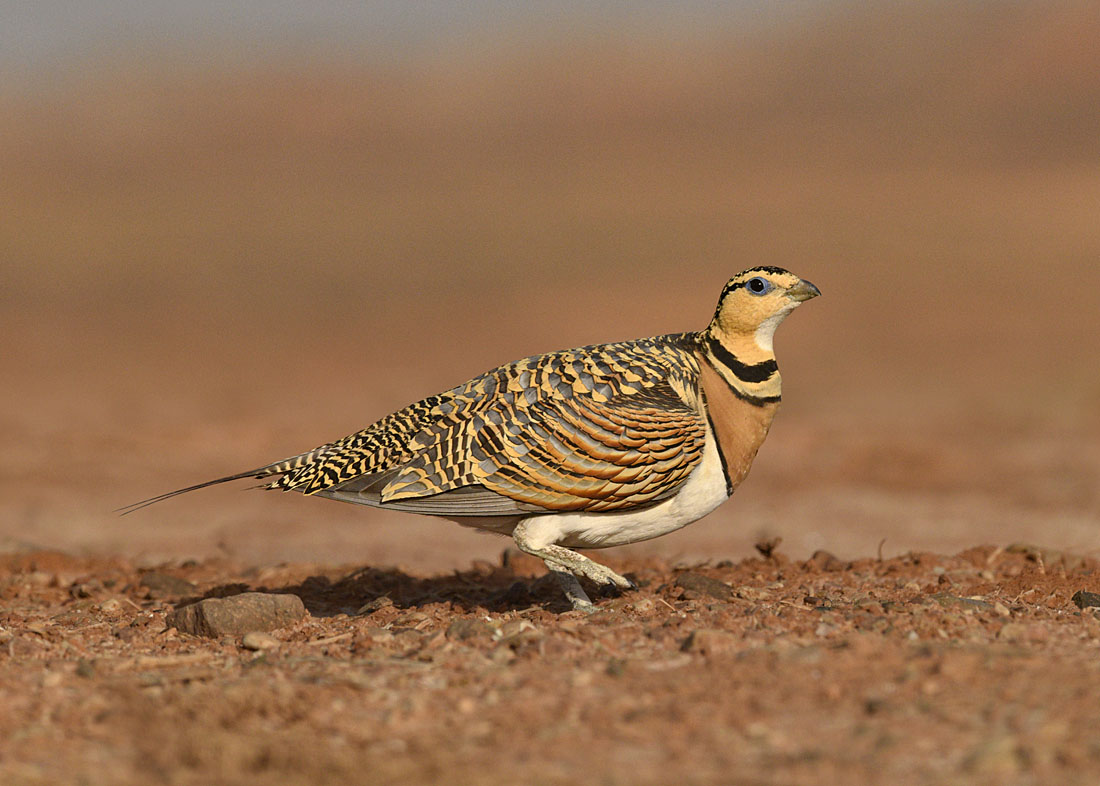The Plains of Spain Revisited by Paul Sterry
Having soaked his belly feathers in water, this male Pin-tailed Sandgrouse flew off to give his chicks a drink, somewhere out the arid steppes.
Last week I spent a few days photographing birds in Spain, in the company of fellow BPOTY team member Andrew Cleave. We visited a few areas in the northeast of the country but the focus of much of our attention was an area of steppe habitat called La Reserva Ornitológica de El Planerón; the reserve lies close to Belchite and not too far from Zaragosa, the capital of Spain’s Aragon region.
While temperatures in the UK soared to dizzying heights, the heat in Spain was positively infernal, reaching 44°C in the heat of the day, and remaining in the low 30s after dark. Given the extreme weather conditions, early July may seem like an odd time of year to be visiting the region. However, when it comes to species with a dependency on water the timing is perfect. Those waterholes that remained acted as magnets for all manner of birds but of particular interest to us were the sandgrouse: both Pin-tailed and Black-bellied occur in the region.
In places the red soils and rocks lend the landscape a Martian quality, the red colours complementing those of this female Pin-tailed Sandgrouse.
Like its Pin-tailed counterpart, this male Black-bellied Sandgrouse has allowed water to soak into the feathers on its underparts before flying off to provide a drink for its chicks.
Over the past 30 years or so I have made several attempts to photograph sandgrouse in southern Europe and the Middle East, some successful, some not. However, the one species that has eluded me all these years is Pin-tailed so it was a wonderful treat to be able to watch at close range this subtly marked and beautiful bird. The possibility of capturing images of birds in flight would have been completely challenging back in the days of film. But even that goal was achievable thanks to modern digital technology.
The colours of this male Black-bellied Sandgrouse are a good match for the contrast and tones of the landscape.
The last time I visited this region of Spain was nearly 20 years ago, in the dying days of film. What struck me then was how rural the landscape was, with the population concentrated in towns and villages and much of the landscape devoid of people. Today the open country remains under-populated for want of a better expression. But unless my memory is playing tricks on me intensive agriculture seems to be in the ascendant and the extent of natural steppe habitat appears to be greatly reduced.
The heat of the day is almost unbearable and otherwise shy species such as this Booted Eagle sometimes forego caution in favour of a good drink.
The Spanish plains are renowned for their larks. Although the chances of seeing the region’s speciality Dupont’s Lark in high summer are remote, four other species are much in evidence near water. Crested, Greater Short-toed and Lesser Short-toed are all around and most impressive of course is Calandra Lark.
During our time at drinking pools, small flocks of Calandra Larks made a regular appearance, with birds often hovering before committing to landing.
Stone-curlews also visited the drinking pools for an early morning wash and brush-up. Perhaps it was affected by the heat in some way, but this particular bird displayed some rather odd behaviour for several minutes, almost like it was chasing its own shadow.








